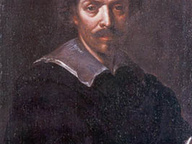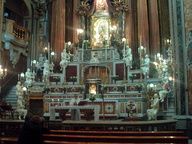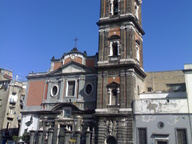Niccolò Biddau. Unfolded Shapes
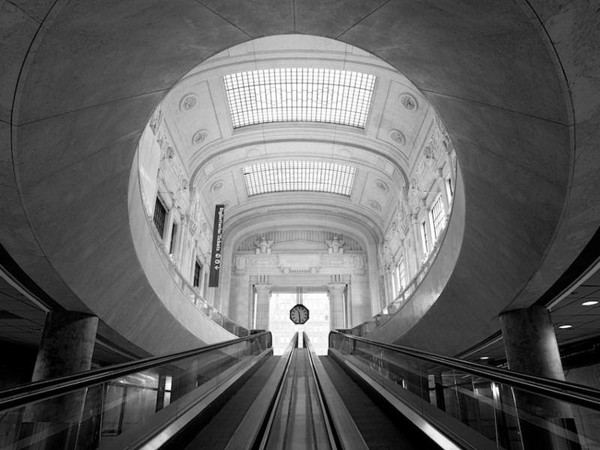
© Niccolò Biddau / 29 ARTS IN PROGRESS gallery | Niccolò Biddau, Stazione Centrale di Milano, 2008
From 26 Febbraio 2019 to 06 Aprile 2019
Milan
Place: ARTS IN PROGRESS gallery
Address: via San Vittore 13
Times: Tuesday-Saturday, 11am – 7pm. Other days and hours by appointment
Responsibles: Giovanni Pelloso
Ticket price: free entrance
Telefono per informazioni: +39 02 94387188
E-Mail info: info@29artsinprogress.com
Official site: http://www.29artsinprogress.com
From 27thFebruary to 6thApril 2019, 29 ARTS IN PROGRESS gallery in Milan(Via San Vittore 13) will host the exhibition by Niccolò Biddau “Unfolded Shapes”. Curated by Giovanni Pelloso, the exhibition gathers thirty photographs creating a journey through the discovery and comparison among visions, iconic figures and symbolic values.These images reveal the city of Milan (his latest book Changing Milanoin stores now) and the inherent beauty of industries products Made in Italy, enriched by poetry and emotion of a renownedarchitecture and industry photographer.
His photographs are characterisedby his ability to reshapethe contours of the reality of things: his images dilate time of perception and imagination, leaving us the choice of our step in the formation and stratification of meanings.
In a thick black and white, prints give the visitor the opportunity to grasp the commitment of an author focused on shape and design without losing sight of his sensitivity and artistic personality.His photography focuses on the static nature of industrial objects, as well as sculptural and architectural forms, and this is conveyed in the details, almost always hidden, but which once identified, leap out in all their vitality.
The city as a stage.
As a city in constant transformation, the urban fabric of Milan is composed of innovative and futuristic projects, of spectacular, performing and efficient architecture that harmoniously integrate into the surrounding environment. From iconic architectures of the modern Milan like Torre Velasca and Montecatini Palaces designed by Giò Ponti, to the urban renewal of the contemporary Milan like Bicocca, Porta Nuova, CityLife and Fondazione Prada. A rhythmical sequence of volumes with different heights has a very strong visual impact and transforms the urban landscape into a spectacular play of lights and reflections.
Milan is a subject in a never-ending evolution and seeing it through the lens of a contemporary photographer give us the possibility to see in all its modernity and its “revisited” metropolitan nature.
A journey through the Italian industry.
This selection is an opportunity to get closer to the industrial world in a completely new and original way. In some cases, we are unexpectedly captivated and enchanted by the intense scrutiny placed on the material of a component, on the light that passes through it or its complex shape.
A journey that has surprised its own protagonists and that has given Niccolò Biddau numerous national and international awards, including the first prize at the Black and White Spider Awards in Los Angeles (USA).
Niccolò Biddau will be one of the featured authors on display in the gallery's booth as part of the next edition of MIA Photo Fair 2019.
Thursday, 14thMarch 2019, starting at 6.30 pm, 29 ARTS IN PROGRESS gallery will host a talk with the artist and the book signing of his latest book Changing Milano.
Niccolò Biddau (Torino, 1966) - A brief biography.
Niccolò Biddau began his career in 1988 as a freelance photographer, doing reportages in the Far East and Latin America. He later focused on nude and fashion photography in Italy and abroad, and since 1998 has been specializing in black and white photography, focusing mainly on urban landscapes, sculptures and interiors. 2002 marked a turning point in his career when, investigating the production cycles of companies, he began to place the “aesthetics of technology” at the centreof his interpretative language. From then on he placed all his efforts into developing this theme by creating photographic services on the excellence of Italian industry, which were published in monographs, displayed in exhibitions and featured in major Italian magazines and publications. This was accompanied by a new core of research: architectural complexes and monuments and their artistic components. In 2005, in addition to his work as a photographer, he became an editor of books and exhibitions dedicated to Italian industrial photography for important Italian institutions and companies. He collaborates with publishers, institutions and industries in the creation of photographic campaigns. His photos have been published in monographs, displayed at exhibitions.
In 2010, because of his originality, artistic merits and style, the Black and White Spider Awards Jury - made up of thirty-nine of the most important names in the world of photography - judged him to be one of the best black and white photographers in the world.
His photographs are characterisedby his ability to reshape the contours of the reality of things, transferring to them all the subjective feeling that a vision is capable of suggesting. The adoption of black and white photography allows him to work on empty and full spaces, enhancing the absolute nature of matter through the stillness that is trapped within. His photography focuses on the static nature of industrial objects, as well as sculptural and architectural forms, and this is conveyed in the details, almost always hidden, but which once identified, leap out in all their vitality.
Christian Caujolle define Biddau’s work as “part of a tradition characterisedby an irreproachable formal requirement, by the framing and relationship with forms, by the image that affirms its originality, by light in her perfection. This requirement comes from the love for the materials and volumes of the objects and at the same time from the search for the structure (fundamental and not often visible) and from those who make these objects.
There is an obstinate desire to put things into order in an attempt to understand them better and give them a meaning by sublimating their appearance”.
His photographs are characterisedby his ability to reshapethe contours of the reality of things: his images dilate time of perception and imagination, leaving us the choice of our step in the formation and stratification of meanings.
In a thick black and white, prints give the visitor the opportunity to grasp the commitment of an author focused on shape and design without losing sight of his sensitivity and artistic personality.His photography focuses on the static nature of industrial objects, as well as sculptural and architectural forms, and this is conveyed in the details, almost always hidden, but which once identified, leap out in all their vitality.
The city as a stage.
As a city in constant transformation, the urban fabric of Milan is composed of innovative and futuristic projects, of spectacular, performing and efficient architecture that harmoniously integrate into the surrounding environment. From iconic architectures of the modern Milan like Torre Velasca and Montecatini Palaces designed by Giò Ponti, to the urban renewal of the contemporary Milan like Bicocca, Porta Nuova, CityLife and Fondazione Prada. A rhythmical sequence of volumes with different heights has a very strong visual impact and transforms the urban landscape into a spectacular play of lights and reflections.
Milan is a subject in a never-ending evolution and seeing it through the lens of a contemporary photographer give us the possibility to see in all its modernity and its “revisited” metropolitan nature.
A journey through the Italian industry.
This selection is an opportunity to get closer to the industrial world in a completely new and original way. In some cases, we are unexpectedly captivated and enchanted by the intense scrutiny placed on the material of a component, on the light that passes through it or its complex shape.
A journey that has surprised its own protagonists and that has given Niccolò Biddau numerous national and international awards, including the first prize at the Black and White Spider Awards in Los Angeles (USA).
Niccolò Biddau will be one of the featured authors on display in the gallery's booth as part of the next edition of MIA Photo Fair 2019.
Thursday, 14thMarch 2019, starting at 6.30 pm, 29 ARTS IN PROGRESS gallery will host a talk with the artist and the book signing of his latest book Changing Milano.
Niccolò Biddau (Torino, 1966) - A brief biography.
Niccolò Biddau began his career in 1988 as a freelance photographer, doing reportages in the Far East and Latin America. He later focused on nude and fashion photography in Italy and abroad, and since 1998 has been specializing in black and white photography, focusing mainly on urban landscapes, sculptures and interiors. 2002 marked a turning point in his career when, investigating the production cycles of companies, he began to place the “aesthetics of technology” at the centreof his interpretative language. From then on he placed all his efforts into developing this theme by creating photographic services on the excellence of Italian industry, which were published in monographs, displayed in exhibitions and featured in major Italian magazines and publications. This was accompanied by a new core of research: architectural complexes and monuments and their artistic components. In 2005, in addition to his work as a photographer, he became an editor of books and exhibitions dedicated to Italian industrial photography for important Italian institutions and companies. He collaborates with publishers, institutions and industries in the creation of photographic campaigns. His photos have been published in monographs, displayed at exhibitions.
In 2010, because of his originality, artistic merits and style, the Black and White Spider Awards Jury - made up of thirty-nine of the most important names in the world of photography - judged him to be one of the best black and white photographers in the world.
His photographs are characterisedby his ability to reshape the contours of the reality of things, transferring to them all the subjective feeling that a vision is capable of suggesting. The adoption of black and white photography allows him to work on empty and full spaces, enhancing the absolute nature of matter through the stillness that is trapped within. His photography focuses on the static nature of industrial objects, as well as sculptural and architectural forms, and this is conveyed in the details, almost always hidden, but which once identified, leap out in all their vitality.
Christian Caujolle define Biddau’s work as “part of a tradition characterisedby an irreproachable formal requirement, by the framing and relationship with forms, by the image that affirms its originality, by light in her perfection. This requirement comes from the love for the materials and volumes of the objects and at the same time from the search for the structure (fundamental and not often visible) and from those who make these objects.
There is an obstinate desire to put things into order in an attempt to understand them better and give them a meaning by sublimating their appearance”.
SCARICA IL COMUNICATO IN PDF
COMMENTI

-
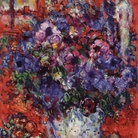 Dal 20 aprile 2024 al 27 ottobre 2024
Conversano | Castello Conti Acquaviva D'Aragona
Dal 20 aprile 2024 al 27 ottobre 2024
Conversano | Castello Conti Acquaviva D'Aragona
-
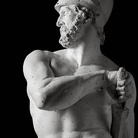 Dal 20 aprile 2024 al 29 settembre 2024
Possagno | Museo Gypsotheca Antonio Canova
Dal 20 aprile 2024 al 29 settembre 2024
Possagno | Museo Gypsotheca Antonio Canova
-
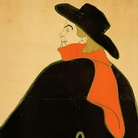 Dal 20 aprile 2024 al 21 luglio 2024
Torino | Mastio della Cittadella
Dal 20 aprile 2024 al 21 luglio 2024
Torino | Mastio della Cittadella
-
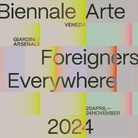 Dal 20 aprile 2024 al 24 novembre 2024
Venezia | Sedi varie
Dal 20 aprile 2024 al 24 novembre 2024
Venezia | Sedi varie
-
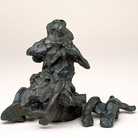 Dal 16 aprile 2024 al 15 settembre 2024
Venezia | Gallerie dell’Accademia
Dal 16 aprile 2024 al 15 settembre 2024
Venezia | Gallerie dell’Accademia
Willem de Kooning and Italy
-
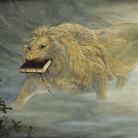 Dal 17 aprile 2024 al 22 settembre 2024
Venezia | Ateneo Veneto
Dal 17 aprile 2024 al 22 settembre 2024
Venezia | Ateneo Veneto

